One of the last great Gloucester schooners: The L.A. Dunton of Grand Bank celebrates 100 years
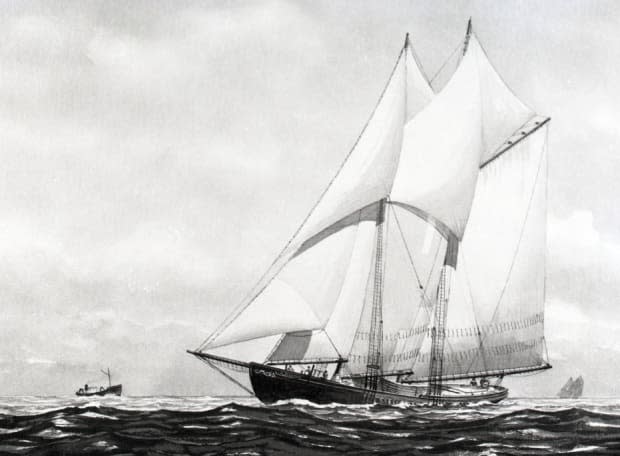
Earlier this year, the schooner L.A. Dunton marked a century since its launch, and a Fortune, N.L. man — the only doryman still alive who fished on it — is closing in on that milestone as well.
The Dunton was built by Arthur D. Story and launched at Essex, Mass., on March 23. 1921. Built after auxiliary gasoline power had become common in schooners, she was probably the last large engine-less fishing schooner — often referred to locally as a "dummy-schooner" — to be built. .
Named for Louis A. Dunton, a well-known Maine sailmaker, the ship's deck measured 124 feet long by 25 feet wide and her hold was 11½ feet deep. She was described as a two topmasted schooner with the main lower mast being 88½ long. The total height of the mainmast, including topmast, before an auxiliary crude oil engine of 100 horsepower was installed in 1925, was 113 feet above deck.
She was a 10-dory schooner, with two men to a dory while fishing — a crew of 22 men, including captain and cook, who lived in very cramped quarters.
When the schooner reached the fishing grounds the dories were lowered over the side and rowed off from the vessel. Baited trawls were set and hauled. If the fish were abundant the men worked around the clock, fishing and cleaning the catch, snatching food and sleep as they could.
Fog was the fishermen's greatest enemy; going astray from their mother ship or being run down by another ship or steamer was always a dangerous possibility.
The Dunton, built for captain Felix Hogan of Boston, fished the nearby Georges Banks and as far away as the Grand Banks for halibut in the summer and haddock during the winter.
According to reports of the day, "she continued to run to the banks under canvas and Yankee ownership" until Hogan retired from the sea in the early 1930s.
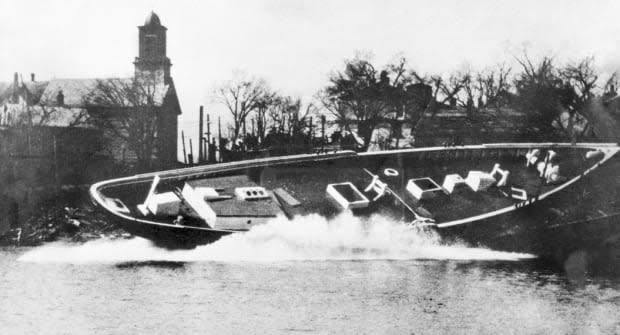
Enter captain Benjamin Pine, renowned Gloucester fisherman and internationally known racing skipper, who was born in Belleoram, N.L., but moved to the Gloucester area with his family at age 10.
The year was 1933; Gloucester and the fishing industry were in the throes of the Great Depression. Many people were unemployed and had no choice but to go on the dole.
As schooners were lost or came to the end of their working life, they were not replaced. Pine, like other owners, tried to sell some of his vessels; but there was a very limited market.
The Depression, which broke out in 1929, caused demand for Newfoundland's iron ore, newsprint and salt cod to plummet. Similar to the situation in the U.S., jobs were hard to come by Newfoundland, and many people ended up on government relief that was so small it provided only about half of a person's nutritional requirements.
Schooner decline
In the late 1800s, there were more than 300 schooners, carrying some 8,000 men, coming from all parts of the island, sailing to the offshore fishing banks in pursuit of cod. However, during the 1930s the picture changed dramatically; only 40 banking vessels, carrying at most 1,000 men, regularly engaged in the fishery. According to the report, the schooners came almost exclusively from ports on the south coast, such as Grand Bank and Burin.
In 1934, a total of 18 banking schooners out of Grand Bank, carrying more than 400 men, caught nearly seven million pounds of cod (66,544 quintals).
It was the same year, on Feb. 22, that Grand Bank's Aaron Buffett of G&A Buffett Ltd. wrote in his diary, "G&A Buffett had offer of schooner L.A. Dunton from Capt Ben Pine of Gloucester, which is being accepted."
On April 19, 1934, Buffett along with his wife, Elizabeth, as well as captain Clarence Williams and his crew — who would sail the vessel back to Grand Bank — arrived in Boston. The next day they went to Gloucester, where they met Ben Pine and saw the Dunton for the first time.
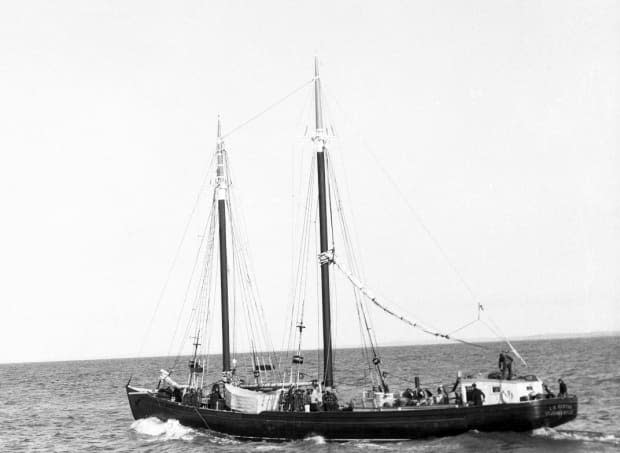
It took nearly a month to complete all that had to be done, including docking and caulking, installing a lighting plant, purchasing rope, chains and other needed equipment and getting permission for transfer of the vessel from Washington before the Dunton was ready to leave.
With Buffet and his wife there to see her off, the ship left Gloucester on May 17.
The 13-year-old schooner was about to begin the second chapter of her life; for the next 29 years her home port would be Grand Bank.
It is not recorded how long it took captain Williams and crew to bring the schooner from Gloucester to Grand Bank, but Buffett noted in his diary, "Dunton on June 13, 1934, loaded with 2,050 quintals of salt fish, sailed for Oporto [in Portugal]."
On July 14, 1934, the schooner left Oporto bound for Lisbon, where she loaded 125 tons of salt and arrived back at Grand Bank on Aug. 6.
The Dunton made another trip to Portugal with salt fish in September of that year, again returning with 125 tons of salt.
Before the end of the year she also sailed three times to Nova Scotia ports, once for lumber and general cargo and twice for coal.
On Dec. 12 the L.A. Dunton was back at Grand Bank after dropping off some crew members at Bay L'Argent and Stone's Cove.
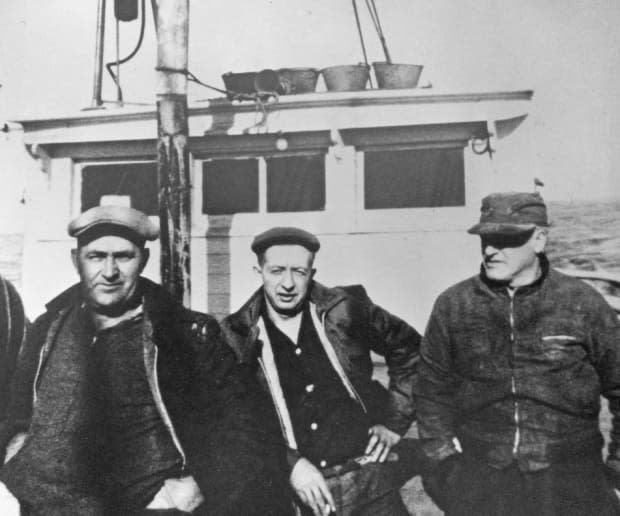
The vessel was then tied up until mid-February as Buffett's next diary entry that mentions the vessel is dated Feb. 19, 1935: "Our two schooners, Nina W. Corkum with ten men and L. A. Dunton with 12 men, are being fitted for the Banks."
Williams fished the schooner for many years; in 1938 she landed 4,090 quintals of salt cod for the season.
To cope with the harsh realities of fishing the offshore banks in Newfoundland, changes had to be made in the Dunton's original appearance. A pilot house was built over the steering wheel after the amount of canvas she carried was reduced; her bowsprit disappeared and her lofty mainmast was replaced with a spar noticeably shorter than the fore.
Later, below deck, some of her 16 focs'le berths were sacrificed for additional cargo space and a large Fairbanks Morse diesel engine of 160 horsepower was installed; the ship had become a motor vessel with auxiliary sail.
A household name
In the 1930s and '40s captain Alex Smith — referred to as one of the "fish killers" of the schooner bank fishery —regularly returned to Grand Bank with bumper catches of cod; including his record year in the Dunton when he landed enough cod to make 7,000 quintals of dried fish.
On June 3, 1945, Buffett wrote, "Schooner 'L.A. Dunton' came from the banks with a full load — 1,150 quintals — including locker on deck filled and some in the wheelhouse."
Over time the Dunton became a household name in Grand Bank. While her softwood Canadian-built sister ships began to disappear, the Essex-built vessel — timbered and planked with the best white oak — went on and on.
With the building of fresh fish-processing plants and the coming of the steel-side trawlers in the late 1940s and early 1950s, the era of the salt-fish banking schooners came to an end. During her last few seasons on the offshore banks, the Dunton landed fresh fish catches in Nova Scotia.
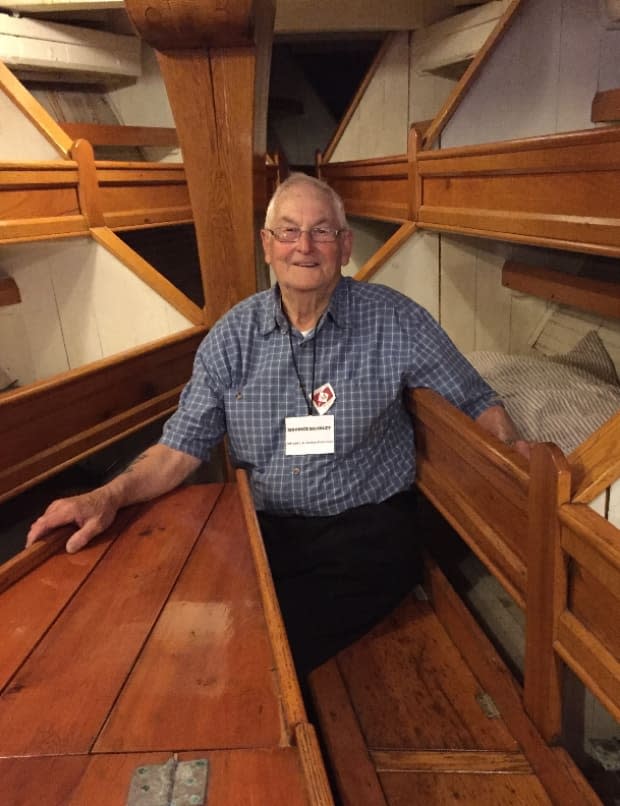
Maurice Kearley, 93, of Fortune is the only doryman still living who ever sailed on the vessel. He was on the ship with captain Arch Evans for eight months in 1953, its last year as a fishing schooner.
"We were halibutting that year, landing in Nova Scotia, making more money than we would ever make salt cod fishing," he said.
Having spent nine years as a doryman, he described the Dunton, as "a good schooner, and very fast when we put the sails up on her."
In 1956 the Buffett firm sold the Dunton to S. Piercey in Grand Bank. Four years later she was sold again to J.B. Foote & Sons. Both businesses used her in the coastal trade as a carrier of general cargo, mainly between Halifax and Sydney, N.S., and Newfoundland ports.
Retirement and restoration
In early October 1963, the schooner was purchased by the Marine Historical Association of Mystic, Conn.; within days, under command of captain Harvey Banfield and his Newfoundland crew, it was delivered to its new Mystic Seaport owners, who restored it to its original rig and appearance as a "Banks fisherman."
In 1994 the ship was designated as a national historic landmark, one of the last great Gloucester schooners to fish the offshore banks; it's now one of the top attractions at the Mystic Seaport Museum.
Kearley — who will be 94 in August — has been to Mystic three times to visit the Dunton: once in 2001 with his wife, Rita, along with three other former crew members and their wives as guests of the Seaport Museum, and in 2016, accompanied by his granddaughter, Heidi.
The L.A. Dunton is still in the water at the Mystic Seaboard Museum and is open to visitors. Dan McFadden, director of communications, says the museum is raising money for the vessel's restoration.
"Securing wood of the appropriate species, size and quality is a challenge and requires a lot of advance work," he said. A laser scan of the exterior and interior was done. The purpose is to set a baseline of the schooner's condition that is the foundation reference for planning further work."

